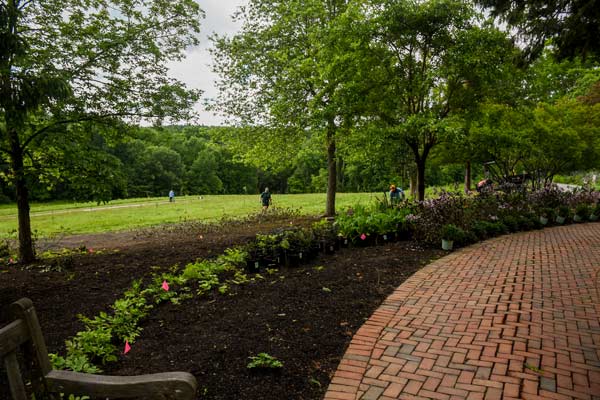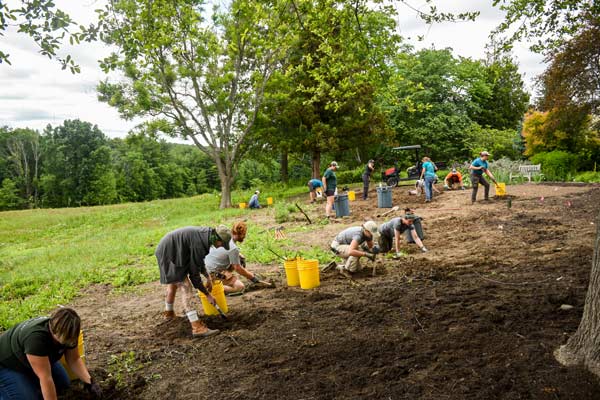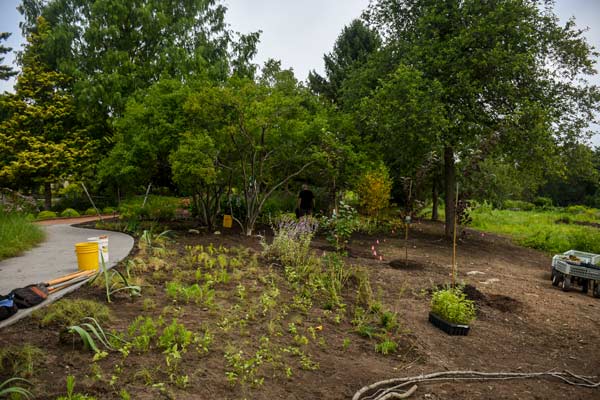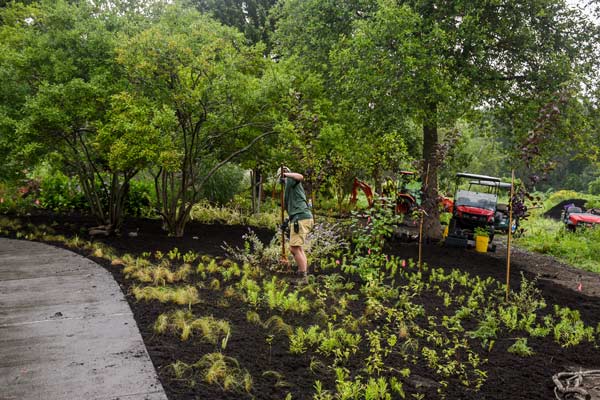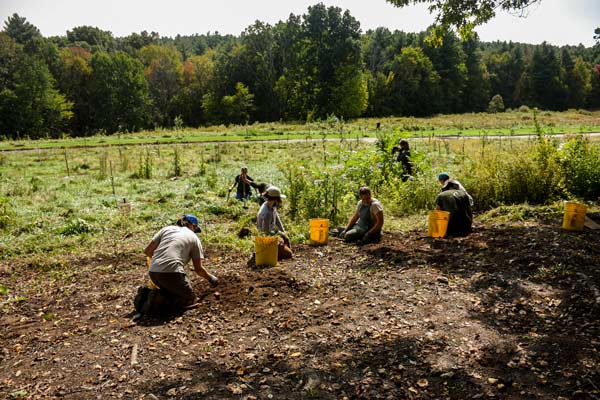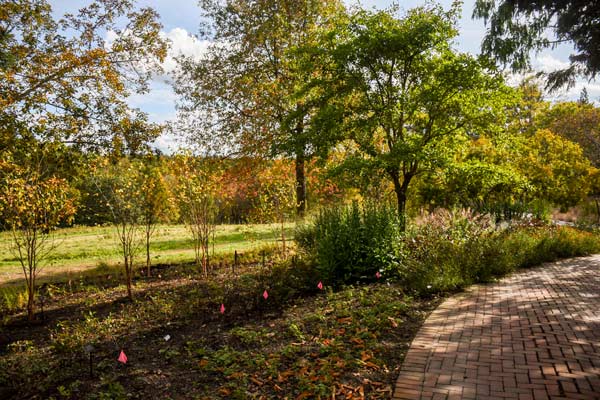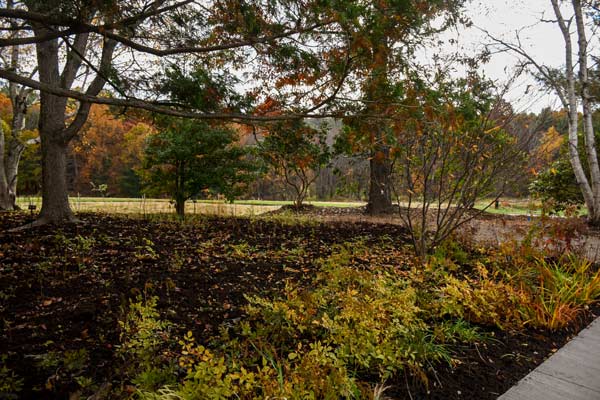By Bella Bogdanski, Horticulturist, New England Botanic Garden
The Beneficial Border is a newly renovated extension of the Lawn Garden at New England Botanic Garden. Prior to December 2022, this 12,000 square foot garden space was densely packed with ground covers, woody shrubs, trees, and opportunistic invasive species. Being a border between the Lawn Garden, Vegetable Garden, and heirloom Apple Orchard, this space mainly functioned as a screen, providing the Lawn Garden with a more enclosed feel. Seeing this thicket of shrubs and trees compared to the intentional lush, flowering perennial plants across the path, only made it clear that this area needed a big change.
Designing the Beneficial Border required a lot of thought and research because we wanted to focus our efforts on providing habitat for pollinators. I created the design with a colleague and former Garden horticulturist, April Tougas. We both took inspiration from influential garden designers Piet Oudolf, Nigel Dunnett, and Kelly D. Norris, and especially Norris’s New Naturalism course. The idea of New Naturalism considers the relationships between horticulture, ecology, and climate change while creating and maintaining gardens, which was integral in designing the Beneficial Border.
To manage designing this expansive garden, we divided it into three sections. The first section, closest to the Lawn Garden, contains the most formal design aspects. The second section is a layer of structural elements with trees, shrubs, and self-sowing perennials and annuals. The third section is planted with a variety of native grasses and perennials and also hosts the Garden’s apiary.
Patterns, colors, and textures became the forefront of our designs, as well as choosing different flower shapes to provide a variety of food sources for pollinators. The mouths of pollinators come in all different shapes and sizes. Some have short mouths, perfect for plants like yarrow (Achillea millefolium), while others have a long proboscis designed for tubular flowers like cardinal flower (Lobelia cardinalis). By focusing our efforts on creating a diverse plant list, we aimed to attract and provide habitat for a wide variety of beneficial insects.
Beneficial insects not only help pollinate plants but are also a natural approach to pest control. Jessica Walliser’s Book Attracting Beneficial Bugs to Your Garden proved to be a great resource for understanding bugs and their habits and provided an established plant list from Walliser’s home garden. Her personal anecdotes of her own garden were valuable in understanding how natural pest control works. The Xerces Society also has excellent resources on pollinators, as well as research on beetle banks, which is where I drew a lot of my ideas from for the Beneficial Border. The concept of a beetle bank also influenced our design and planning. A beetle bank is a linear strip of native grasses and perennials that provide shelter for beneficial insects to overwinter, typically on farms. Since the Beneficial Border parallels the Vegetable Garden and heirloom Apple Orchard, choices we make here help these spaces with natural pest control.
Starting in 2022, with help from Parterre Garden Services, garden volunteers, horticulture staff, and corporate groups, we were able to remove all the overgrown material through meticulous work. Now, the space boasts an array of flowering perennials, native plants, and specimen trees. In total, over 1,180 staff hours and 120 volunteer hours contributed to the success of the Beneficial Border. One of the best parts about working on this project is being able to connect people with plants, whether it’s volunteers, coworkers, or garden patrons. Being a botanic garden means teaching and showing people how gardens can be created and maintained. The Beneficial Border concept is a great way to dive deeper into gardening by seeing the connection between people, plants, and pollinators.
Pollinators are the backbone of gardens — and of our global food systems. Climate change, habitat loss, and pesticide use are taking a huge toll on their numbers. Supporting beneficial insects, including pollinators, by providing habitat through plantings like our Beneficial Border is one of the many ways homeowners can make a positive impact on our environment in the age of climate change.
This is the time to embrace all kinds of insects and trust Mother Nature’s intended processes for them. Instead of maintaining sprawling lawns which require copious amounts of water, fertilizer, and pesticides to keep them green all year, low-maintenance gardening is possible by supporting local biodiversity. This can be in the form of adding a few native plants to an established garden bed or removing a small chunk of lawn or overgrown space and replacing that with a new pollinator garden. And remember, change doesn’t have to be as dramatic as our Beneficial Border to make a big difference.
About the Author
Bella Bogdanski was a Horticulturist for the Lawn and Secret Gardens of New England Botanic Garden at Tower Hill from 2022 to 2024. She was responsible for maintaining, creating, and developing gardens with a focus on formal aspects of horticulture. Bella holds a B.A. in Environmental Studies and Art and Design from Saint Michael’s College in Vermont. Her professional interests include environmental aesthetics, garden sustainability, and continuing education in the field of horticulture.




